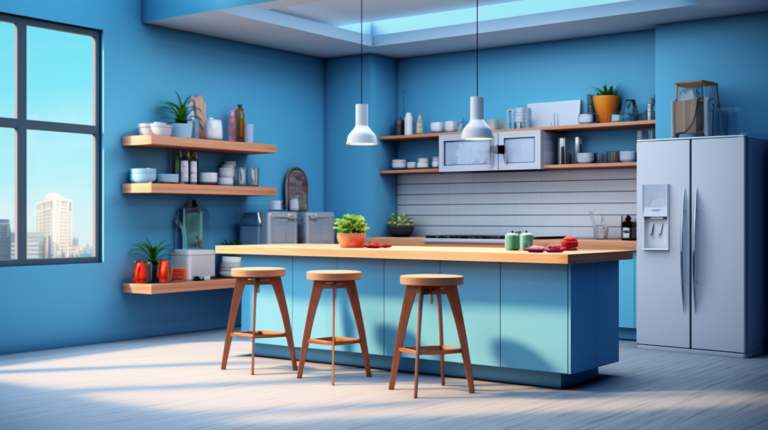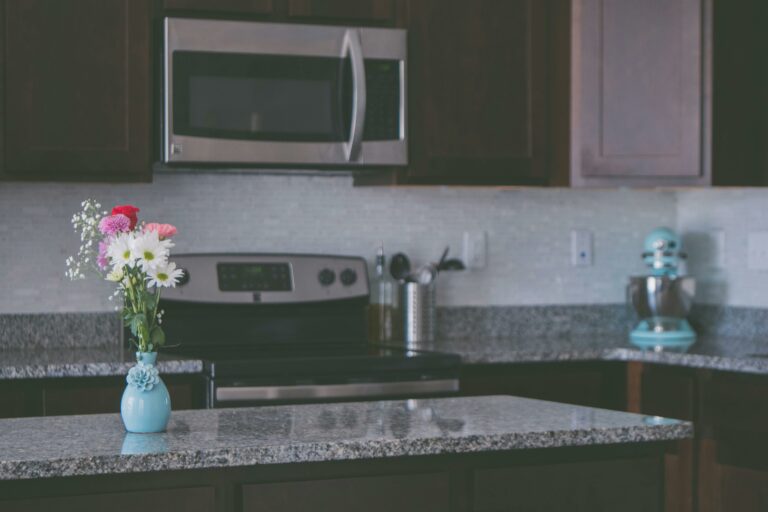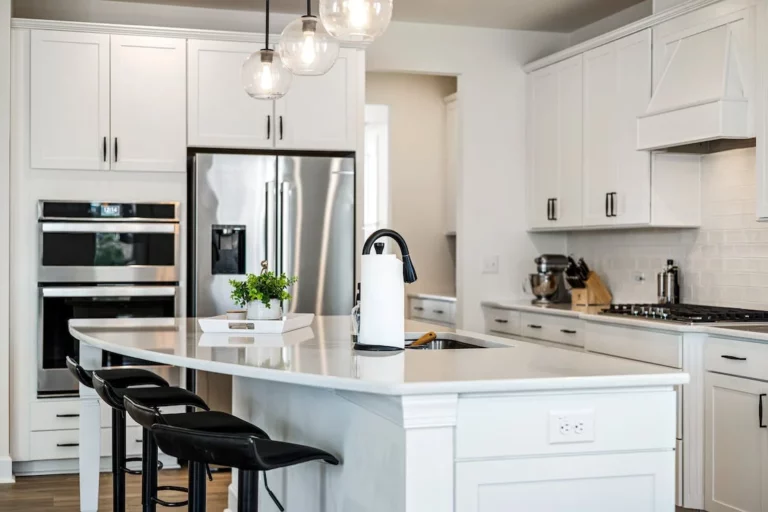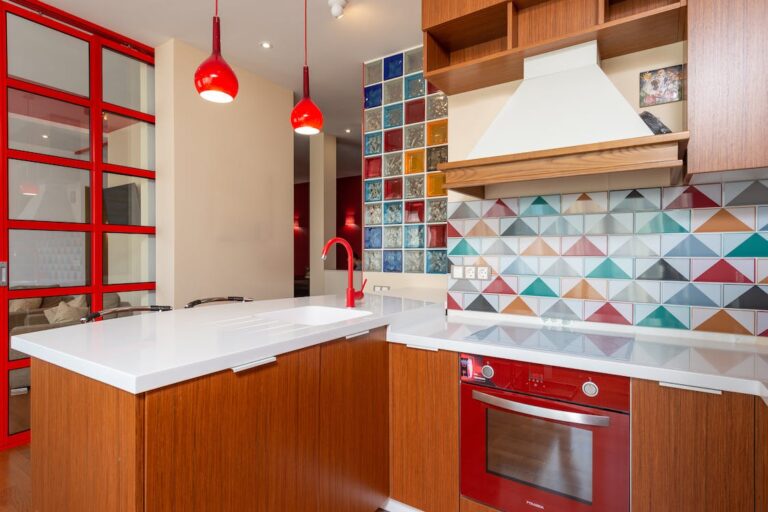Choosing the Right Kitchen Sink: Materials and Styles Explained in 2023
Welcome to our guide on choosing the right kitchen sink! The kitchen sink is an essential part of any kitchen, serving as a hub for meal preparation, dishwashing, and even a stylish centerpiece. With so many options to choose from, it can be overwhelming to navigate the vast selection of sink materials and styles available in the market.
But fear not! In this article, we will break down the different considerations you need to keep in mind when selecting a kitchen sink. We will discuss the various materials used in kitchen sink construction, highlight their pros and cons, and explore the different sink styles and configurations that are popular today. By the end of this guide, you’ll have all the knowledge you need to make an informed decision and find the perfect kitchen sink for your home.
So without further ado, let’s dive right in and explore the wide world of kitchen sinks!
Table of Contents
Considerations for Choosing the Right Kitchen Sink

When it comes to designing your perfect kitchen, the sink is an essential element that deserves careful consideration. From functionality to aesthetics, your choice of kitchen sink can have a significant impact on your everyday life. Here are some key factors to consider when selecting the right kitchen sink for your needs.
Kitchen Layout and Size
One of the first things to consider is the layout and size of your kitchen. The sink should complement the overall design and flow of the space. If you have a smaller kitchen, a compact sink may be more suitable, whereas a larger kitchen can accommodate a bigger and more spacious sink. It’s important to ensure that the size of the sink is proportionate to the countertop and surrounding cabinets.
Functionality and Usage
Consider how you will be using your kitchen sink on a daily basis. Are you an avid cook who will be washing large pots and pans frequently? Or do you mainly use your sink for basic tasks like washing dishes and vegetables? Understanding your usage patterns will help you determine the functionality you need in a sink, such as the number of basins and the depth of the kitchen sink.
Budgetary Constraints
Setting a budget for your kitchen sink is crucial to ensure that you don’t overspend on this particular element. Sinks come in a wide range of price points, so it’s important to determine how much you’re willing to invest. Keep in mind that while certain materials may be more expensive upfront, they could offer long-term durability and value, saving you money on repairs or replacements in the future.
Considering these factors will help narrow down your options and make the selection process much smoother. But with the myriad of sink materials available, it’s essential to get acquainted with the pros and cons of each to make an informed decision.
Common Sink Materials
When it comes to choosing a kitchen sink, one of the most important considerations is the material it is made from. Different sink materials offer various benefits and drawbacks, so it’s essential to understand your options before making a decision. Here are some common sink materials to consider:
Stainless Steel

Pros:
- Durability and Easy Maintenance: Stainless steel sinks are highly durable and resistant to stains, corrosion, and heat.
- Limited Variety: Stainless steel sinks come in a wide range of sizes and configurations, making them suitable for various kitchen layouts and designs.
Cons:
- Limited Variety: While stainless steel sinks offer practicality and versatility, they may not provide as many design options compared to other materials such as fireclay or copper.
Cast Iron

Pros:
- Classic and Durable: Cast iron sinks have a timeless appeal and are known for their durability.
- Requires Regular Maintenance and Care: To prevent chipping or scratching the enamel, cast iron sinks require regular maintenance and careful use.
Cons:
- Requires Regular Maintenance and Care: The enamel coating on cast iron sinks can chip or scratch over time, requiring you to take extra precautions during use.
Composite

Pros:
- Versatile and Durable: Composite sinks are made from a blend of natural materials, such as granite or quartz, with resins. They offer durability, heat resistance, and come in a wide range of colors and styles.
- Possible Scratches and Stains: While composite sinks are generally resistant to scratches and stains, some darker colors may show light scratches more prominently.
Cons:
- Possible Scratches and Stains: Certain types of composite sinks, particularly those in darker colors, may be prone to showing light scratches and stains more visibly.
Fireclay

Pros:
- Elegant and Heat Resistant: Fireclay sinks have a beautiful, glossy finish that adds a touch of elegance to any kitchen. They are also highly heat resistant, making them suitable for heavy-duty use.
Cons:
- Prone to Chipping: Fireclay sinks are more susceptible to chipping compared to other materials. It’s important to handle them with care to avoid damage.
Copper

Pros:
- Unique and Antimicrobial Properties: Copper sinks offer a unique, rustic look and have natural antimicrobial properties.
- Requires Regular Polishing: To maintain their lustrous appearance, copper sinks require regular polishing and maintenance.
Cons:
- Requires Regular Polishing: Copper sinks can develop a patina over time, which some homeowners find desirable. However, if you prefer the original shine, regular polishing is necessary.
Keep in mind that personal preferences and the overall style of your kitchen will ultimately influence your choice. It’s important to weigh the pros and cons of each material to select the one that best suits your needs and aesthetic preferences.
In the next section, we will explore various sink styles and configurations to help you make an informed decision for your kitchen.
Pros and Cons of Each Material

When it comes to kitchen sinks, choosing the right material is crucial. Each material has its own unique set of pros and cons. Here, we’ll discuss the advantages and disadvantages of the most commonly used sink materials:
Stainless Steel:
- Durability and Easy Maintenance: Stainless steel sinks are highly durable and resistant to stains, rust, and corrosion. They are also easy to clean and maintain, making them a popular choice for busy kitchens.
- Limited Variety: One drawback of stainless steel sinks is that they come in a limited range of shapes and sizes. So if you’re looking for a specific style or design, you may have to explore other materials.
Cast Iron:
- Classic and Durable: Cast iron sinks are known for their timeless appeal and durability. They can withstand heavy daily use without showing signs of wear and tear.
- Requires Regular Maintenance and Care: One downside of cast iron sinks is that they require regular maintenance to prevent chipping and staining. They need to be cleaned with non-abrasive products to maintain their original finish.
Composite:
- Versatile and Durable: Composite sinks are made from a combination of various materials, such as quartz, granite, or acrylic. They offer durability, resistance to scratches and stains, and are available in a wide range of colors and styles.
- Possible Scratches and Stains: While composite sinks are generally durable, they can still be prone to scratches and stains if not properly cared for. Avoid using abrasive cleaners or scrubbing pads that could damage the surface.
Fireclay:
- Elegant and Heat Resistant: Fireclay sinks are known for their elegant and timeless appeal. They are resistant to heat, making them suitable for heavy-duty kitchen tasks such as hot pans and boiling water.
- Prone to Chipping: One drawback of fireclay sinks is that they can be prone to chipping if heavy objects are dropped on them. It’s important to handle them with care to avoid any damage.
Copper:
- Unique and Antimicrobial Properties: Copper sinks offer a unique and rustic look to your kitchen. They also have natural antimicrobial properties, making them resistant to bacteria and other microorganisms.
- Requires Regular Polishing: Copper sinks require regular polishing to maintain their shine and prevent tarnish. If you prefer a low-maintenance sink, copper may not be the best choice for you.
It’s important to consider your lifestyle, preferences, and budget when choosing the right material for your kitchen sink. Each material has its own set of pros and cons, and understanding them will help you make an informed decision that suits your needs.
Sink Styles and Configurations

When it comes to choosing a kitchen sink, there are a variety of styles and configurations to consider. Each style offers its own unique advantages and can greatly impact the overall look and functionality of your kitchen. In this section, we’ll explore some popular sink styles and configurations to help you make an informed decision for your kitchen.
- Top Mount Sinks: Also known as drop-in or self-rimming sinks, top mount sinks are the most common type of sink found in kitchens. These sinks have a rim that sits on top of the countertop, holding the sink in place. Top mount sinks are relatively easy to install and can be used with any type of countertop material. However, the rim can sometimes accumulate dirt and grime, making them slightly harder to clean compared to other sink styles.
- Undermount Sinks: Undermount sinks are installed underneath the countertop, creating a seamless look with the countertop surface. These sinks are great for achieving a sleek and modern aesthetic in your kitchen. Because they don’t have a rim, cleaning is easier as there are no crevices for dirt to accumulate. However, undermount sinks require professional installation as they need to be securely attached to the countertop.
- Farmhouse or Apron Sinks: Farmhouse sinks have gained popularity in recent years for their charming and rustic appeal. These sinks have a large, deep basin and a front-facing apron that extends beyond the edge of the countertop. Farmhouse sinks are known for their generous space, making it easier to wash large pots and pans. They also add a touch of character and style to any kitchen. However, it’s important to note that farmhouse sinks may require custom cabinetry modifications to accommodate their size and weight.
- Dual Basin Sinks: Dual basin sinks, also known as double bowl sinks, feature two separate basins within the same sink unit. These sinks are perfect for multitasking or for households that generate a lot of dishes. You can use one basin for washing and the other for rinsing or soaking. Dual basin sinks come in different configurations, such as equal-sized bowls or one larger basin and one smaller basin. Just keep in mind that the divider between the two basins might limit the size of large items you can wash.
Remember, the style and configuration of your sink should not only complement the overall design of your kitchen but also meet your specific needs and preferences. Consider the following factors when choosing a sink style and configuration:
- The size of your kitchen and available countertop space
- Your lifestyle and cooking habits
- The amount of dishes you typically wash
- The functionality and practicality of different sink styles
- The ease of cleaning and maintenance
Once you have a clear understanding of your requirements, it will be easier to select the sink style and configuration that best suits your needs. Remember, don’t be afraid to mix and match styles to create a unique and personalized look for your kitchen.
Choosing the Right Sink for Your Kitchen

Choosing the right sink for your kitchen is an important decision that can greatly impact the functionality and aesthetics of your space. With so many options available, it may feel overwhelming to make a choice. However, by considering your kitchen style, practical needs, and maintenance requirements, you can find the perfect sink that meets all your requirements. Here are some tips to help you choose the right sink for your kitchen:
Matching the Sink to your Kitchen Style
One of the first things to consider when choosing a sink is the overall style of your kitchen. Whether you have a modern, traditional, or farmhouse-style kitchen, it’s important to select a sink that complements the existing design. Here are a few popular sink styles:
- Undermount Sinks: These sinks are installed beneath the countertop, providing a sleek and seamless look. They work well with solid surface or stone countertops and are a great choice for contemporary kitchens.
- Top Mount Sinks: Also known as drop-in sinks, these are the most common type of sinks found in kitchens. They have a rim that rests on the countertop. Top mount sinks are versatile and work with any countertop material.
- Farmhouse or Apron Sinks: These sinks have a front panel that extends beyond the edge of the countertop. They are a popular choice for rustic and farmhouse-style kitchens, adding a touch of charm and character.
- Dual Basin Sinks: These sinks feature two separate basins, offering the convenience of multitasking. They are great for busy kitchens where food prep and cleanup happen simultaneously.
Considering Practical Features
In addition to style, it’s important to consider the practical features that your sink should have. Think about your cooking and cleaning habits, as well as the size of your household. Here are a few factors to consider:
- Size and Depth: Determine the size and depth of the sink based on your needs. If you wash large pots and pans frequently, a deeper sink might be beneficial. Consider the size of your kitchen and the available space for the sink.
- Number of Basins: Decide whether you prefer a single basin or a double basin sink. Single basin sinks offer more space for large items, while double basin sinks allow for multitasking.
- Drainboard or Cutting Board: Some sinks come with built-in drainboards or cutting boards, which can be very convenient for food prep and cleanup. Consider if these additional features suit your needs.
- Accessories and Attachments: Consider any additional accessories or attachments you may want with your sink, such as a garbage disposal or a soap dispenser. These can make your kitchen tasks more efficient.
Taking Maintenance and Care into Account
Maintenance and care requirements are important factors to consider when choosing the right sink for your kitchen. Different sink materials have varying levels of durability and maintenance needs. Here are some popular sink materials and their pros and cons:
| Sink Material | Pros | Cons |
|---|---|---|
| Stainless Steel | – Durable and resistant to stains and heat – Easy to clean and maintain |
– Limited variety in terms of design and style |
| Cast Iron | – Classic and durable – Available in a wide range of colors – Resistant to stains and scratches |
– Requires regular maintenance and care to avoid chipping and rusting |
| Composite | – Versatile and durable – Wide variety of colors and designs – Resistant to stains and scratches |
– Possible scratches and stains over time |
| Fireclay | – Elegant and heat resistant – Easy to clean and maintain |
– Prone to chipping if heavy objects are dropped – May require additional support |
| Copper | – Unique and antimicrobial properties – Develops a natural patina over time |
– Requires regular polishing to maintain its shine – Can be prone to water spots and scratches |
Consider the level of maintenance and care you are willing to put into your sink when selecting a material.
Choosing the right sink for your kitchen involves considering various factors such as the kitchen style, practical features, and maintenance requirements. Take your time to research and explore different options before making a decision. Remember, the sink is an essential part of your kitchen, and finding the perfect one that meets your needs can greatly enhance your overall cooking and cleaning experience. Happy sink shopping!
Installation and Maintenance

Once you’ve chosen the perfect kitchen sink for your space, the next step is to ensure it is installed properly and maintained regularly. Proper installation and maintenance are crucial to ensure the longevity and functionality of your sink. Here are some key considerations:
Hiring a Professional or DIY
- Professional Installation: If you’re not confident in your plumbing skills, it’s best to hire a professional plumber to install your kitchen sink. They have the experience and expertise to ensure proper installation.
- DIY Installation: If you’re skilled and comfortable with plumbing tasks, you can choose to install the sink yourself. However, make sure to follow the manufacturer’s instructions carefully and have all the necessary tools and materials on hand.
Proper Installation Guidelines
- Positioning: The sink should be centered and aligned properly with the countertop cutout.
- Sealing: Use a high-quality sealant or adhesive to create a watertight seal between the sink and the countertop.
- Secure Mounting: Ensure that the sink is securely mounted to the countertop or cabinet using brackets or clips provided by the manufacturer.
- Connect Plumbing: Connect the water supply lines and drainpipe according to your local plumbing codes. It’s important to double-check for any leaks or drips before finalizing the installation.
Maintenance Tips for Prolonged Durability
- Regular Cleaning: Clean your sink regularly with mild soap or a non-abrasive cleaner to prevent the buildup of dirt, stains, and bacteria. Avoid using harsh chemicals or abrasive scrubbers that can damage the sink’s surface.
- Avoid Heavy Impact: Be cautious when placing heavy pots, pans, or utensils in the sink to prevent chipping or scratching the surface.
- Avoid Hot Objects: Do not place hot pans or pots directly on the sink’s surface, as some materials are susceptible to heat damage. Always use trivets or heat-resistant mats.
- Prevent Stains: Wipe off any food or liquid spills immediately to prevent staining, especially with materials like fireclay or composite sinks.
- Regular Maintenance: Periodically check for any loose fittings, leaks, or clogs in the plumbing connections. Tighten any loose fittings and address any issues promptly to avoid further damage.
By following these installation guidelines and maintenance tips, you can ensure that your kitchen sink remains in good condition and provides you with years of reliable service. Remember, proper care and attention to your sink will help it maintain its functionality and aesthetic appeal for many years to come.
Also read; The Ultimate Guide to Choosing the Perfect Kitchen Design in 2023
Conclusion
In conclusion, choosing the right kitchen sink is an important decision that can greatly impact the functionality and aesthetics of your kitchen. By considering factors such as kitchen layout and size, functionality and usage, and budgetary constraints, you can narrow down your options and find a sink that fits your needs.
When it comes to sink materials, each option has its own set of advantages and disadvantages. Stainless steel sinks are durable and easy to maintain, but they may have limited variety in terms of design. Cast iron sinks offer a classic look and are highly durable, but they require regular maintenance and care. Composite sinks are versatile and durable, but they are susceptible to scratches and stains. Fireclay sinks are elegant and heat resistant, but they can be prone to chipping. Copper sinks have unique properties and are antimicrobial, but they require regular polishing to maintain their appearance.
Consider the different sink styles and configurations to find one that complements your kitchen design. Top mount sinks are easy to install and have a rim that sits on top of the countertop. Undermount sinks are installed beneath the countertop for a seamless look. Farmhouse or apron sinks have a front-facing panel that adds a touch of country charm. Dual basin sinks provide separate spaces for washing and rinsing.
To choose the right sink for your kitchen, make sure it matches your kitchen style and consider practical features such as depth, size, and number of basins. Don’t forget to think about maintenance and care requirements to ensure the longevity of your sink.
If you’re unsure about installation, it’s best to hire a professional to ensure proper installation. Follow the recommended guidelines for installation to avoid any issues in the future. Additionally, always remember to follow maintenance tips specific to the material of your sink to keep it in top condition for years to come.
Ultimately, finding the perfect kitchen sink involves a careful balance between functionality, style, and budget. Consider all the factors discussed in this article to make an informed decision. With the right sink, your kitchen will not only look great but also provide you with a practical and convenient space for meal preparation and clean-up. Happy sink shopping!
Frequently Asked Questions
- What are the different materials available for kitchen sinks?There are various materials available for kitchen sinks including stainless steel, cast iron, composite granite, fireclay, and porcelain. Each material has its own pros and cons in terms of durability, maintenance, and appearance.
- Which material is the most durable for a kitchen sink?Stainless steel is considered the most durable material for a kitchen sink. It is resistant to stains, heat, and corrosion. However, the gauge of the stainless steel also affects durability, with lower gauge meaning thicker and more durable.
- What are the different styles of kitchen sinks?Some common styles of kitchen sinks include undermount, top mount (drop-in), farmhouse (apron-front), and integrated (seamless). Each style has its own aesthetic appeal and installation requirements.
- Which kitchen sink style is the most popular?The undermount style is currently the most popular choice for kitchen sinks. It offers a seamless and clean look as the sink is mounted underneath the countertop, creating a sleek and uninterrupted surface.
- How do I choose the right kitchen sink for my needs?Consider factors such as material durability, maintenance requirements, style and design preferences, size and configuration, and budget when choosing a kitchen sink. It’s also important to assess your cooking and cleaning habits to determine the features that would best suit your needs.







